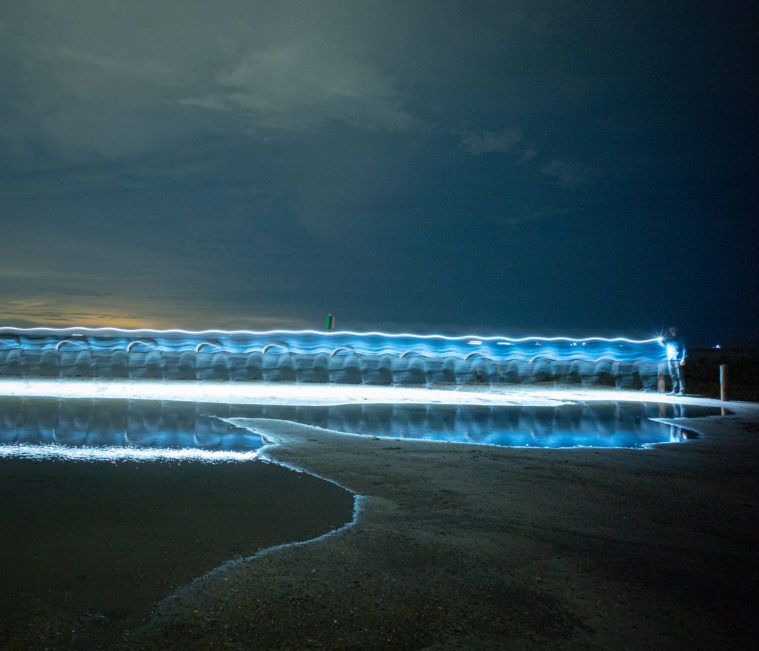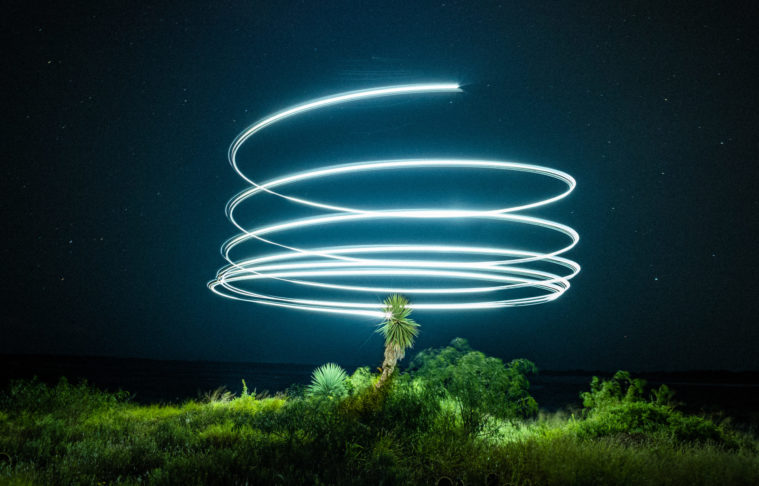All along the nearly 400-mile stretch of Texas’ Gulf Coast, nearly a dozen oil and gas export terminals are slated to come online within the next decade. In “The Export Boom,” reporter Amal Ahmed writes how this expansion of the United States’ oil and gas export industry has been a decade in the making.
For this investigation, photographers Ivan Armando Flores and Jordan Vonderhaar worked to create a more comprehensive understanding of the extent to which liquified natural gas facilities impact their environments and our climate. Employing the use of long-exposure photography and light painting with the aid of a drone, they were able to impose the specter of industrialization on these pristine coastal environments. These images create an ahistorical record of the land and allow our readers to visualize clearly the impact and scale these facilities will have on the land.

Freeport, Texas: This field will be used to build a tank farm, a facility for storage of liquid petroleum products or petrochemicals.

Portland, Texas: A proposed pipeline route.

Port Isabel, Texas: The proposed site of the Rio Grande LNG facility.
This story was supported by the Institute for Journalism and Natural Resources and the Pulitzer Center’s Connected Coastlines Initiative.







